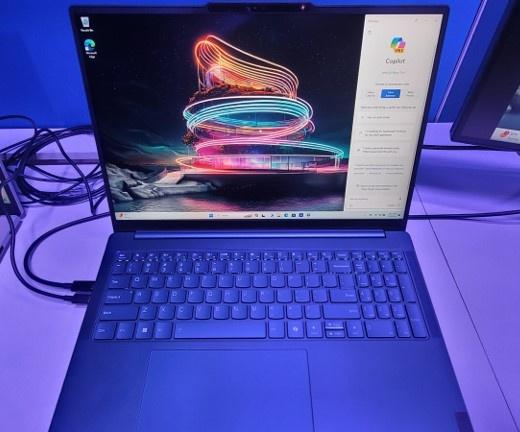While the idea of an AI PC has been in the works for several years, the buzz around AI-powered PCs reached a peak in late 2023 with the introduction of a new wave of processors boasting enhanced AI capabilities. Microsoft’s initiative to integrate Copilot into every PC further fueled this momentum. Yet, transforming a PC into an intelligent system goes beyond merely running neural network models. It entails imbuing the PC with contextual awareness of its surroundings and users. This necessitates leveraging sensors, network data, user profiles, and low-power processing that remains active and adaptable continuously. This underscores the significance of utilizing Field Programmable Gate Arrays (FPGAs) among myriad opportunities.
Embracing Contextual Awareness
The notion of context awareness, which involves comprehending and adjusting to specific environments in real-time, is a relatively nascent yet increasingly vital aspect for electronic devices.
PC manufacturers and tech firms have been at the forefront of developing AI technologies that utilize image sensor data to bolster PC security. These advancements encompass human detection, facial recognition, attention monitoring, and threat detection to enable seamless sign-in procedures and automatic locking when the PC is unattended or detects a security breach. However, the scope extends beyond these applications. A smart PC should discern whether the user is at home, work, or a restaurant to grant access to networks and peripherals accordingly, adapting security protocols correspondingly. Moreover, an intelligent PC should employ AI agents to tailor the environment (e.g., temperature, lighting, music) to suit user preferences or requirements. Ultimately, crafting an intelligent PC involves more than just optimizing productivity applications through AI models.
Harnessing the Potential of Sensors
Essential Functions for an Intelligent AI PC
Sensor technology plays a pivotal role in this realm. PCs, especially mobile variants, already incorporate various sensors for monitoring system temperature, images, and audio. The wealth of information gleaned from external image and audio sensors encompasses person and object identification, user authentication, user movement tracking, user health metrics (including heart rate and temperature), spatial mapping, object recognition, and environmental analysis. As sensor technology continues to evolve, additional sensors may be integrated to capture even more environmental data. Real-time or near-real-time processing of this sensor data on the device is crucial for data security and minimal latency, even during system dormancy. This processing must also adapt to evolving AI models and user experiences over the PC’s lifespan, highlighting the importance of low-power FPGAs.
Lattice Semiconductor collaborates with leading PC manufacturers like Dell, Lenovo, and LG to leverage its CrossLink-NX family of low-power FPGAs for vision processing and Avant general-purpose FPGAs for advanced sensor processing. The CrossLink-NX products combine processing capabilities, a Digital Signal Processor (DSP) for matrix operations, on-chip memory, and a flexible FPGA fabric for versatile I/O configurations, crucial for diverse sensor interfaces. With compact form factors, Lattice devices can be situated near the sensors. Leveraging parallel processing, these devices can operate at a mere 150MHz, enabling continuous operation while consuming minimal power. This approach not only offloads sensor processing from the primary processor but also allows the host processor and most of the system to enter low-power states frequently, even between user interactions or display updates.
Benefits of Lattice FPGAs for Intelligent AI PC Functions
Utilizing sensor data to automatically adjust display brightness based on user attention or environmental stimuli enhances power efficiency and user experience. For instance, the display dims when the user looks away or when someone approaches from behind, while brightness increases if the user appears drowsy or struggles to view the screen clearly. These are a few examples of how image sensors in conjunction with Lattice CrossLink-NX FPGAs are enhancing AI applications today, with new sensor functionalities in the pipeline.
With multiple programmable functions, Lattice products offer adaptability to varying product configurations, emerging AI models, evolving data standards, and diverse interfaces without necessitating hardware changes.
An intriguing aspect is how innovation in one domain influences others where Lattice FPGAs are deployed. User attention sensing mirrors driver monitoring tech in vehicles, security controls draw parallels to government and healthcare sectors, and display brightness adjustment aligns with commercial lighting systems. The potential applications for sensors are vast, as forward-thinking companies explore novel ways to leverage sensor data. One notable application is gesture control, commonly seen in VR headsets and poised to become mainstream in consumer devices like TVs and PCs.
Pioneering Intelligence
Although AI garners significant attention, intelligence stands as the ultimate objective for consumer and commercial electronic platforms. While a multi-GHz processor could handle the requisite computations, it may not be the most efficient approach, given its substantial power consumption and potential impact on user experience. Crafting intelligent solutions demands a hybrid strategy to enhance overall system performance, efficiency, and security. FPGAs play a pivotal role in enabling the latest advancements in AI and intelligence. While FPGAs were once niche technologies primarily used in advanced development processes or specialized low-volume applications, the landscape is evolving. The emphasis now lies on compact, low-power form factors offering enhanced performance and functionality. FPGAs’ flexibility and adaptability to evolving requirements, such as diverse sensors, position them as a cost-effective, power-efficient solution for intelligent PCs and other electronic platforms.










